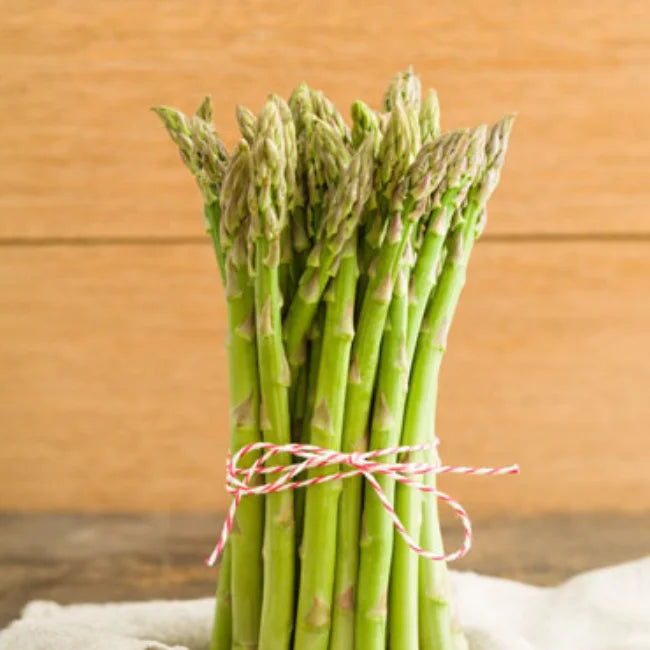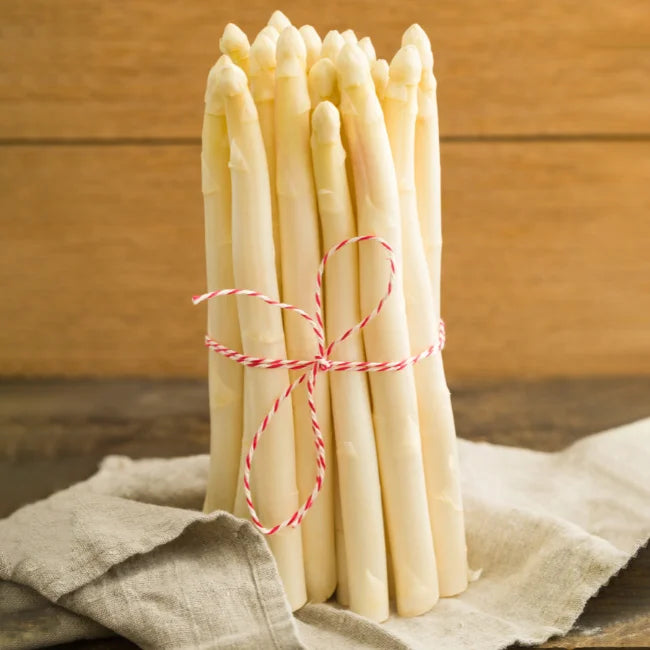Seeds Ireland
Asparagus Roots: Gijnlim White
- Regular price
- €4.99 EUR
- Regular price
-
- Sale price
- €4.99 EUR
- Unit price
- per
Couldn't load pickup availability
Due Back In Stock In January 2026
Click the "Notify Me When Available" button and enter your email address to be notified when they are back in stock.
Name: Asparagus Roots: Gijnlim White
Latin Name: Asparagus officinalis
Description: Gijnlim is a popular asparagus variety known for its early and abundant yields. It was developed in the Netherlands and has gained recognition among asparagus growers for its excellent taste, uniformity, and disease resistance.
Gijnlim asparagus typically has medium to thick spears with a delicious flavour profile, making it a sought-after choice for both commercial and home growers. Its adaptability to various climates and soils also contributes to its popularity in the asparagus growing industry.
Bulb Origin: Netherlands
Organic Certified: No
Planting: February to April
Harvesting: After 90 to 120 Days
How To Grow Asparagus From Roots: Plant each root 15cm deep and 30cm apart into a well drained soil. Cover with soil and water thoroughly.
Adding some general fertiliser or manure into the ground before planting will provide a good source of nourishment for the root to grow.
Protect them from frost in Winter by covering the plant with straw.
Select a Suitable Location: Choose a well-draining location with full sun exposure for your asparagus bed. Asparagus thrives in soil with a pH of 6.5 to 7.5, so consider conducting a soil test and amending the soil if necessary.
Prepare the Soil: Work the soil to a depth of at least 30 cm, removing any rocks, weeds, or debris. Incorporate organic matter, such as compost or aged manure, to improve soil fertility and structure.
Planting Roots: Gijnlim asparagus is typically grown from bare roots, also known as crowns. Plant the crowns in early spring, as soon as the soil can be worked. Dig trenches about 15-20 cm deep and 30-45 cm wide.
Spacing: Space the crowns about 30-45 cm apart within the trench. Position them with the buds facing upward.
Cover with Soil: Cover the crowns with about 5 cm of soil initially. As the asparagus plants begin to grow, gradually fill in the trenches with soil until they are level with the surrounding ground.
Watering: Water the newly planted crowns thoroughly after planting, to settle the soil and provide moisture. Keep the soil consistently moist but not waterlogged throughout the growing season.
Weed Control: Keep the asparagus bed free from weeds, as they can compete with the young asparagus plants for nutrients and water. Mulching with straw or shredded leaves can help suppress weeds.
Fertilisation: Asparagus is a heavy feeder and benefits from regular fertilisation. Apply a balanced fertiliser in early spring before the spears emerge and again after the final harvest.
Harvesting: Avoid harvesting any spears during the first year to allow the plants to establish a strong root system. In the second year, you can start harvesting when the spears are about 15-20 cm tall. Snap or cut the spears at ground level when they are still tender.
Maintenance: After the last harvest of the season, allow the remaining spears to grow into fern-like foliage. This foliage will photosynthesize and provide energy to the roots for next year's growth. In late Autumn, cut down the foliage and remove any debris from the asparagus bed.
Growing Gijnlim Asparagus To Be White: Gijnlim asparagus can be grown to be white in colour. White asparagus tends to have a milder, more delicate flavor compared to green asparagus. Some people prefer the taste of white asparagus for its subtle sweetness and tender texture. Some people also grow it like this for the way it looks.
To produce white asparagus, the spears are grown covered with soil to prevent exposure to sunlight. This prevents chlorophyll from developing, resulting in the white color.
Follow all of the directions above, but also do the following to grow White Asparagus.
As the spears emerge, gradually mound soil over them to block sunlight and prevent chlorophyll production. Keep mounding soil until the trench is filled and the spears are completely covered.
Share




